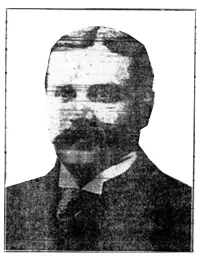22. Lifeboat No.1
Murdoch was at the center of the two most controversial actions of the night: the launching of No. 1 (one of the two emergency boats) and the rush on Collapsible C, repelled by gunfire. No. 1 was sent away in charge of Lookout Symons, but when exactly is a mystery; Collapsible C was launched at approximately 1:40 am, and from the same set of davits and falls. Assuming a roughly similar time between lowerings as elapsed between No. 2 (approximately 1:45 am) and Collapsible D (approximately 2:05 am), then No. 1 may have gone as early as 1:10 am, at which time the aft four boat stations on the starboard side were loading. Designed to hold 40 persons, it left with 12: 7 crew members and 5 passengers, of whom Lady Duff Gordon and her secretary, Miss Francatelli, were the only women. With over a thousand people still aboard, there were none who materialized to fill No. 1 but these few. Murdoch later in the night would himself go look for passengers, but here he did not.
First Class passenger C. E. Henry Stengel was one of those who left in No. 1. Mrs. Stengel had been put into another lifeboat but Mr. Stengel had been refused, so he wandered forward toward the bow:
Mr. Stengel: . . . I do not know what led me there, but there was a small boat that they call an emergency boat, in which there were three people, Sir Duff Gordon and his wife and Miss Francatelli. I asked the officer I could not see them, it was so dark, and I presume I was agitated somewhat I asked him if I could not get into that boat. There was no one else around, not a person I could see except the people working at the boats, and he said 'Jump in'." (Pages 971 972)
Stengel climbed on the railing, and rolled into the boat. Murdoch laughed out loud at this exhibition of clumsiness:
Mr. Stengel: . . . The officer then said, 'That is the funniest sight I have seen to night,' and he laughed quite heartily. That rather gave me some encouragement. I thought perhaps it was not so dangerous as I imagined." (Page 972)

Mr Charles Stengel
Stengel was still "agitated" when he testified, as demonstrated by his confused grammar and contradictory descriptions, but his testimony is convincing. A genuinely frightened Henry Stengel had interpreted Murdoch's amusement as evidence of lack of imminent peril; it has, rather, the flavor of the professional's contempt for amateurs, combined with nervous release.
Stengel was joined by one other man, First Class passenger A. L. Solomon, and Murdoch then ordered Lookout Symons and six crewmen accompanying him to get in. Stengel noted that the boat was about to be lowered when he and Solomon arrived (Page 972). Why it was sent off with so few has been debated ever since. The fact that No. 1 did not return after the sinking to try and save survivors, combined with the generosity of Sir Cosmo Duff Gordon in offering to reimburse the crew members for their lost kit, thereby making the failure to return appear to some like a bribe not to do so, concentrated public opprobrium against the unfortunate Duff Gordons and the other occupants. The order to lower with just 12 persons, however, rested with Murdoch. Stengel was a New Jersey leather manufacturer and Sir Cosmo Duff Gordon was a professional Edwardian gentleman, and neither was given to bravery. Between them they overrode Symons, whom Murdoch had placed in command:
Mr. Stengel: I think between Sir Duff Gordon and myself we decided which way to go." (Page 973)
Back toward the Titanic to fill No. 1 from lower decks was the last direction they wished to take, and while not commendable, it flowed inevitably from the circumstances in which No. 1 had been dispatched.
Collapsible C was fitted into the davits occupied by No. 1. It was now nearing 2:00 am, and yet it was still felt that the Titanic would reach a point of equilibrium and remain afloat. Boxhall, ordered away in command of No. 2 by Murdoch, thought she was "settling down broadside"; he was, he said, "undecided" about whether she would actually sink. (Page 912) Many still aboard were becoming less sanguine. The lights were now dimming, glowing faintly red; down below, the engineers were losing their heroic battle with pumps and dynamos. The terror of darkness was being added to the steady, increasing tilt of the decks, and inside, in the elegance now of First and Second Class as well as the plainness of Third, the North Atlantic could be seen crawling up stairways and slithering along corridors.
Murdoch ordered crewmen to find and pitch overboard everything that would float, deck chairs, dresser drawers, doors, anything to which people might cling. Boatswain Nichols and ten men went below on the First Officer's orders to bring up the big gangplank that would hold 40, but the North Atlantic snatched them somewhere and none of the men were ever seen again.
